Unlock the potential of your brand with effective in-store marketing strategies that boost sales and gain new customers. In-store product sampling is a highly effective strategy for introducing new products to potential customers. Brands should prioritize retailers as strategic partners, invest in in-store marketing, and collaborate with retailers on cross-selling opportunities. Proper planning and execution are crucial to maximize results and ensure profitability.
Your success as a brand relies on your ability to market it effectively. In-store trials, when done right, can add rocket fuel to your sales. It can also open new doors to partner with savvy retailers. Most brands overlook this – learn why this matters
Have you ever pondered the question, if a tree falls in the woods, would it make a sound? Think about it. That’s the focus of today’s podcast. No, we’re not going to talk about trees, we’re going to talk about products. So let me rephrase that question. If you put your product on a retailer’s shelf, will someone buy it? If you launch your product, will people find it, and will they buy it? Product trials are the best way to gain new customers when done right. Maximizing results with proper planning and execution is the best way to guarantee results.
You’ve probably heard me say, that up to 90% of all trade dollars are wasted. The purpose of your trade marketing is to introduce your product to a new customer, period. That’s it. It’s not designed to try to get existing customers to buy your product, even though that’s not a bad thing. And it’s not designed to pay for slotting and all those other fees that don’t drive profitable sales. Let’s face it, retail’s expensive. It’s pay to play, especially if you’re a small brand. That’s why this matters so much, and that’s why this episode is so important to anyone with an emerging brand or an existing brand.
Let’s face it, shoppers can’t buy your products if they can’t find them. Retailers want any brands willing and able to help them drive profitable category sales, increase shopper foot traffic, and convert occasional customers into loyal evangelists. Remember that everything is negotiable, especially in this industry. The first impression shoppers have of your brand is usually on a store shelf, this is why this is so important. Sampling products can be very costly, and it’s hard to target your ideal customer when using traditional strategies.
The best way to introduce your brand to a future shopper is through product trials. One of the most effective ways to do this is through in-store product sampling, this means allowing customers to try your products while they shop. As with everything, there’s a right way and there’s a wrong way to sample your products. Many brands overlook the critical elements required for an effective in-store marketing program. There’s a lot more to this than simply having a stack of your products sitting on a counter or in a cart in a retail store.
Think about it. The reason this strategy’s so effective is because you have the undivided attention of a future customer standing before you and wanting to try your product. This is your best opportunity to convert them into a loyal evangelist for your brand. You definitely don’t want to blow this.
Even though we’re talking about strategies for traditional retail, these strategies work for everywhere you sell your product, including online.
Download the show notes below
Click here to learn more about Big Orange Productions
Listen where you get your podcast
Important: Brand Secrets and Strategies has been rebranded to Retail Solved. Please swap all BrandSecretsandStrategies.com URL’s with RetailSolved.com. This is now the Bulletproof Your Brand podcast. Thank you for listening! BRAND SECRETS AND STRATEGIES PODCAST #123 Hello and thank you for joining us today. This is the Brand Secrets and Strategies Podcast #123 Welcome to the Brand Secrets and Strategies podcast where the focus is on empowering brands and raising the bar. I’m your host Dan Lohman. This weekly show is dedicated to getting your brand on the shelf and keeping it there. Get ready to learn actionable insights and strategic solutions to grow your brand and save you valuable time and money. LETS ROLL UP OUR SLEEVES AND GET STARTED! Dan: Welcome. Have you ever pondered the question, if a tree falls in the woods, would it make a sound? Think about it. That's the focus of today's podcast. No, we're not going to talk about trees, we're going to talk about products. So let me rephrase that question. If you put your product on a retailer's shelf, will someone buy it? If you launch your product, will people find it, and will they buy it? Product trials are the best way to gain new customers when done right. Maximizing results with proper planning and execution is the best way to guarantee results. You've probably heard me say, that up to 90% of all trade dollars are wasted. The purpose of your trade marketing is to introduce your product to a new customer, period. That's it. It's not designed to try to get existing customers to buy your product, even though that's not a bad thing. And it's not designed to pay for slotting and all those other fees that don't drive profitable sales. Let's face it, retail's expensive. It's pay to play, especially if you're a small brand. That's why this matters so much, and that's why this episode is so important to anyone with an emerging brand or an existing brand. Let's face it, shoppers can't buy your products if they can't find them. Retailers want any brands willing and able to help them drive profitable category sales, increase shopper foot traffic, and convert occasional customers into loyal evangelists. Remember that everything is negotiable, especially in this industry. The first impression shoppers have of your brand is usually on a store shelf, this is why this is so important. Sampling products can be very costly, and it's hard to target your ideal customer when using traditional strategies. The best way to introduce your brand to a future shopper is through product trials. One of the most effective ways to do this is through in-store product sampling, this means allowing customers to try your products while they shop. As with everything, there's a right way and there's a wrong way to sample your products. Many brands overlook the critical elements required for an effective in-store marketing program. There's a lot more to this than simply having a stack of your products sitting on a counter or in a cart in a retail store. Think about it. The reason this strategy's so effective is because you have the undivided attention of a future customer standing before you and wanting to try your product. This is your best opportunity to convert them into a loyal evangelist for your brand. You definitely don't want to blow this. Even though we're talking about strategies for traditional retail, these strategies work for everywhere you sell your product, including online. Before I go any further, I want to give a shout out to a listener who left an amazing review. "A Lifesaver," by C.C., "As a young brand, this podcast has been invaluable. I've been able to get great perception and advice from successful brand leaders. I've moved to correct some common startup mistakes more quickly and shape our strategy with input from this podcast. Thanks." Thanks, C.C., I really appreciate the review. And anyone else, leave me a review on iTunes, through Linkedin, or send me an email and I'll be sure to mention you on a future episode. I want to thank you for listening. Remember, this podcast is about you and it's for you. If you like the podcast, share with your friends, subscribe, and leave a review. Before we go any further, I want to remind you that there's a free downloadable guide for you at the end of every episode of my podcast. I always try to include one easy to download, quick to digest strategy that you can instantly adopt and make your own. One that you can use to grow sustainable sales and compete more effectively. Remember, the goal here is to get your product on more retailer shelves and into the hands of more shoppers. Now here's today's episode with Andrew Therrien. Andrew, thank you for coming on today. Can you please start by telling us a little bit about yourself and your journey to Big Orange Productions? Andrew: Absolutely. So, Andrew Therrien, I'm the director of sales for Big Orange Productions. I've been here, my anniversary just clicked off, for the start of eighth year. So thank you very much. We are an in-store demo company as well as we do some experiential marketing. So if you're ever looking to get out in the field to sort of go out to your customers to help drive some traffic into the retail locations that you have sort of close by, we're somebody who can sort of give you that holistic approach to connecting with consumers and building some value for the retailers that you work with. Dan: Fantastic, thanks for sharing that with me. Before we begin, I want to highlight that anyone watching this, you need to go back and listen to the podcast episode I did with Andrew, episode 32. Salesmanship 401 - In Depth Strategies Every Brand Must Use. Probably one of the best podcasts I've done. Your insights were fantastic. So to use that to frame this conversation, let's talk about the three main stakeholders that you have when you're setting up a demo. And to go one step further, the value of a demo for a young brand is giving consumers an opportunity to try your product for the first time. And once you can get a consumer to love and like your product, then the opportunity for repeat purchase is great. Your thoughts? Andrew: Yeah. The big thing to share is that if people are vetting out somebody that they're going to help represent their brand in different ways, they really need to find somebody who just doesn't understand demos in general, but they really need to understand the full lifecycle of the sales process from the brand's standpoint. So really one of the things that I try and talk about with brands is, they have three stakeholders. They have sort of three people that they need to be responsible to, the retailer, venture capital in a lot of instances, and then the actual consumers who are going to be buying their product from the retailers. Dan: So can you set the stage? You said that there are three main components, three main stakeholders, so talk about the retailer. And what do you need to know when you're working with a retailer, first of all as a brand? And then secondly, how do you coordinate with a retailer when you're thinking about setting up a demo? What are some of the things that any brand listening need to know? Andrew: Sure. And where I think a lot of brands sort of stumble, and if I could sort of help share some of the experience that I have because I've worked with all these different sized brands is that, a lot of brands feel as though when they get into the retailer, that that's the finish line and not so much the starting line of the relationship that they have with the brand. I feel like because maybe there isn't sort of an understanding of the entire process of what's happening, they feel as though that maybe they've gotten beaten up and now that they've succeeded, so, "We're at the finish line, now we just have to focus on getting people to buy my products." Instead of sort of partnering and using the retailer as a resource to be able to help them sell product inside the store. So the best way I think that we can do that is, from a sales 101 perspective, really setting up the sale from the beginning. In order to keep the retailer happy, you're either going to be a commodity and you're going to be a cheap price, or you're going to be a partner with them who plans ahead. So almost talking to your broker or your sales team that is representing you from a headquarter standpoint, to understand what's important to that retailer in particular. Is it going to be demos? Is it going to be slotting fees? All of the above, to understand and then be prepared when you have that meeting to be able to roll out a plan for the next 30, 60, 90 days and then beyond so you can sit there and show that you understand their business, you understand their goals and you're putting yourself inside you're own customer's head. To sort of sit there, not only to do a plan of making sure that customers know that you're actually inside the store, but also you're figuring out your own cost of goods for that particular retailer. So I think that that's a really important place to start, and the more you do in advance, the more respect and time that you'll actually get from the buyers themselves. Because one of the things that I always get is, "The buyers are so busy, they don't want to spend time with me." What I would argue is, if you're building value, and you're finding ways to cross sell your products, and you're finding ways to position yourself appropriately inside their stores, they're willing to spend time with you. Whereas, if you're not building that value back to them, they're not going to spend time with you, they work 60 hours a week. You've been there, right? Dan: Oh, yeah. Well, and I appreciate you're saying that, and thank you so much for going down this path. This is the exact subject that I just covered in this week's newsletter, and in my recent course, What Retailers Really Want. This is so critically important. Brands need to understand this. You're just another box on the shelf until you provide value to the retailer. And that value comes with your ability to add trust, to develop that trusted relationship. I love the fact that you talk about, "This is not the finish line." I agree. Every brand I talk to almost without exception, even the big brands, think that as soon as the product leaves their back room, they're done, job over, they can go home. That's when the selling starts. That's when the hard part starts. And your ability to understand how the consumer uses your product, how they shop for your product, more importantly, help the retailer understand what's unique about that consumer that comes into their store to buy your product. If you can understand that and be able to leverage that in your selling story, then you have a significant competitive advantage as everyone else. The idea that you said, "Use a retailer as a resource," could not agree with you more. Too many brands think of a retailer as a transactional situation. They're a means to an end. Andrew: Means to the end. Yup. Dan: Yeah. Thank you. And so because of that, they overlook the importance of a retailer. Think about it. You've worked hard to get someone to buy your products, most brands today spend all their time trying to reacquire new customers or existing customers. Why not build value with the customers that you've already acquired? Why not build value with that retail partner by helping them drive sales in their category by leveraging the strength of your brand? Again, can not agree with you more. You're either a commodity or you're a partner. Too many brands look at this as, as you said, a transactional relationship. And so by building value, as you said, and learning cross-sell and helping the retailer, that's critically important. So when you're planning a promotion ... First of all, let's talk about promotions. What does that mean? Why is that important? How does it work? And then because you're an expert at this, what do you recommend brands be looking for so that they're getting the very best value from whoever represents their product? Andrew: Sure. So what I would be asking anybody who'd be representing my brand is, "What are you going to be able to do to communicate effectively to the customer?" So here's my brand message, you might have a lot of information that you feel is important, but you really want to be able to stick to three main points. One being, "How can you effectively take my story and put that into a brand ambassador's head, somebody inside the store, to be able to effectively, clearly, and concisely let people know why my brand exists?" And you can formulate that story in many different ways. The other piece is, identifying the three main selling points of your product, whether it's about ingredients, functionality, taste, price, however, you have decided that you're going to position it. And then how that person is going to be able to handle objections with the consumers that they're going to come to. And when I say objections, I really mean, objections as well as misconceptions. So something as simple as, "Are your fair trade palm oil?" Well if that's the case, how are you communicating that to the customers? Is it on the packaging? But also, are your people even qualified to be able to talk about it? Because one of the things that happens in in-store promotions is, that the brand ambassador doesn't feel prepared and that's the failure of the agency as well as the brand. And they realize that the customers know more about the product than they do, and then all of a sudden the phone comes out of their pocket. They decide they're not going to be proactively reaching out to everybody who walks by. And it's not because they're a bad brand ambassador per se, it's just simply that they're not comfortable and psychologically speaking, they're not willing to put themselves out there because no one wants to feel unprepared inside the store. "So how are you going to train that person appropriately to ensure that they're representing your brand properly? And what are the systems in place to sort of hold everybody accountable for ordering a product to make sure that you're going to have product to sell inside the store?" All the way to the end of, "How are you going to be recording and what are my deliverables going to be on the back end, so I can then prove to my venture capital company that it was a good expenditure for us to be able to go and do these demos?" To different feedback that you might get from customers about price or ingredients or taste profiles that might be able to either get to you to tweak something over on your side or at least understand what you're go to market might change to look like. Dan: Well said. Thank you for going down this path. So let me break this down. You're saying that, "You should help the retailer succeed on your behalf." What a novel concept. I'm being a little flippant but the point is, that so many brands take this for granted. If you can help the retailer succeed by selling your product, again, helping the retailer in seeing who's a consumer, etcetera, that is so critically important. Andrew: If you don't plan accordingly ... Right? And you don't set it up to start like what we were just talking about, what ends up happening is, you're so in the minutia and micromanaging the day to day of the demo program, and also managing that the shelf tax didn't go in properly and even though you paid slotting fees, it didn't happen. And you're trying to micromanage all these different processes, that you're being reactionary instead of proactive. If you've already laid out the plan, what you can do from that time forward is then ensure and sort of make sure that the plan that you put out is actually executing and you're managing your plan instead of managing your resources because you're being reactionary towards everything. Dan: Good point. Andrew: Sorry. Dan: In fact ... No, no, no. That's great. I'm glad you said that. It's so critically important. Think about it, how you want to spend your resources. And from the consumer's perspective, if you fail, you have it out of stock, the demo doesn't go well, the demo rep isn't well versed or well educated on your product, the retailer doesn't know about the product, you don't have the right signage, that's a reflection, a very poor reflection on the brand. And it embarrasses the retailer which makes it harder for them to say, "Yes," to your next request. Your next time that you go to them, ask them for a demo or a promotion. And by the way, if you do this right, if a retailer can trust you, if they know that you're going to deliver an extremely high value, when they have an opportunity crop up that maybe they didn't expect or weren't planning on ahead of time, somebody gets out, cancels a contract or something like that, they're going to call you first. This is a win, win. Andrew: Yeah. Dan: So thank you for going down that path. So when you're talking about the three main strategies, what are those three main strategies and then what would a brand use ... I'm trying to think. What are those three strategies and what do you recommend that a brand focus on when they start working on a retailer? We talked about schedules and holding people accountable, etcetera, what does that look like Andrew? Andrew: Well, taking a step back and looking at it from a big picture is, what's your marketing mix going to be 30, 60, 90 days and beyond. Being able to put that plan together, not only about demos, this is, "Where are you going to place your ads? Seasonally, when are you going to do your ads? When are you going to be able to do TPRs or potentially have coupons to be able to drive traffic?" Put your marketing mix together that may include demos, and maybe you have an introductory demo process that's going to be there. And all of a sudden, if you're at a food show and you're having cocktails at the bar and you're talking with somebody and you're a pasta sauce and you're talking with somebody who happens to be a rice pasta company. "Hey, are you in such and such a retailer? Great, we just launched there. In six months for national pasta day, why don't we do a demo that's a co-demo where we're cross-selling for the retailer, and let's go to them and talk to them about how we're doing it. Because I already have it penciled in, that we're going to be doing demos, now I'm going to be able to go in ..." Or even better yet, talk to your agency about what your promotional schedule looks like, and let them do that work for you, to go and find you a demo partner. So you can reduce your overall costs, pay the right people to be representing the brand inside the store because demos are expensive, labor is expensive, promotion is expensive. If you're going to do it, let's do it right. Let's really find the right people, train those people appropriately. Do a long term engagement where maybe you're not hitting every store, but you're selectively targeting stores within a retailer and doing more events where the same person's going to be representing your brand, that the retailer might be telling you, that you need to utilize them, and hold those people accountable for not only sampling your product but truly selling your product inside those stores. Dan: This is one of the main reasons category management came about. About 25, 30 years ago, I'm dating myself, we did things the same way in mainstream. We went into the stores, we had the demos, everything was very short term. My promotional schedule, that's, what I'm going to focus on this month. Category management came about as a way to streamline and add efficiency. Streamline cost and reduce cost, and add efficiencies into the selling process. So we went from 30 day planning to 60 day planning to 90 day planning. Big brands today plan a year or two in advance. The benefit of doing this is you know exactly how much you need to have available to pay for the demos, exactly how much product you need to have available and you have better line of sight to what the opportunities are, what is does the consumer look like, etcetera. Of course, you can tweak those along the way. But the point is, I'm so glad you brought that up, that the more you know, the more you invest in this, the better a return you're going to get out of it. So as a small brand, this is critically, critically important. And the fact that you said that if I co-promote a product with another brand, brilliant. The ability to not only be able to stretch the trade dollars over another brand, one of the things most brands don't understand is that when you promote two products together, within the same category, within the same brand, complimenting products, etcetera, that gives you a much higher lift. And one of the things that I've been able to prove time, and time, and time, and time again is that, if I were to for example, when I was doing this, when I worked for Kimberly-Clark, promote diapers, here's what the benefit would be. But if I had diapers and wipes and childcare at the same time with baby food, the lift would be exorbitantly high comparatively speaking. So thank you for bringing that up. One of the things that you said is, that you said is that you get what you pay for. Can you talk a little bit more about that? Because a lot of people are looking at what does it cost today? As opposed to, what is the value of what I'm putting out there tomorrow and beyond? Andrew: Sure. So this is more as it relates to the demos is what I can truly speak to on this, what I end up getting is, a lot of times ... And this happens because we represent brands but we also have strategic relationships with the retailers. And we get a lot of people who come back to us and say, "That's 30% more expensive than what I'm paying today." And where I'm coming from on it is, I see demos happening inside retail, I'm constantly inside retail locations looking at what the experience is happening inside the stores. And what I'm seeing is, more often than not, it sort of Mabel with a table. Right? Dan: Right. Andrew: It's a person who's not really trained, they don't really know anything about the product other than maybe what they looked up five minutes before the demo. They haven't been prepared to go and do that. All of that preparation does cost money, but if you're going to go to the demo, don't just do it as a check off saying, "I promised the buyer that I would go and do the demos." Use it as a way to make your buyer happy that you went and did the demos but also, sell a lot of product while you're there. Dan: That's why Andrew: So that, we have to hire the right people. And in order to hire the right people, especially in certain pockets of the country, you have to pay a pretty decent wage to be able to get the right person to represent your brand, that can speak intelligently, that actually knows how to pronounce "Vegan". And not only can they pronounce it but what does it mean, and how does it mean something to this customer? And be able to read the customer, because maybe they're not Vegan, "Okay, that's fine. It still tastes great and it's better for you. Please try it and let me know what you think." And then be able to take that information back, document it appropriately so we can share that information back with you. If you're paying somebody 12, $13 an hour to be able to do that, you truly are going to get what you pay for. So that's sort of the value proposition as it relates to demos, but the way that I liken it is, it's the same thing with a lot of the products, excuse me, that we represent. There's a reason why it's more expensive. The ingredients are more expensive. For the product that I sell, which is the service of that human inside the store, to be able to cultivate sales and education and sort of some market research, the ingredients of that person is better than 95% of the talent that's out there inside the stores. And if I can translate that into sales for you, not just sales day of, but sustained lift over time, that's where the true value of a demo comes into play. Not so much, "How cheap can I get through this just to make everybody happy?" And I'll say it again, it goes back to the plan. If you know what your plan is for the year and you've trained the right people, and you've found the right partnerships throughout the supplier process, you're going to be able to get a better cost of goods, so when you go to your VC company and say, "Here are our expenditures, here's the programs that I want to do." Everything gets approved in advance instead of you having to go back to them later and potentially giving up equity because you have to do a 550 store chain, and do the demos because you didn't plan for that accordingly and you gave away the farm already. And then on the back end, they come back and say, "Oh. Well, what about demos?" And you've already given up whatever margin in profitability you already had." Dan: So critically important. If you think about it, one of the goals, one of the reasons that we're having this conversation, is to help brands get more out of their available training. Andrew, thank you again for coming on today. Can you please tell us, how do we reach you, tell us a little bit about, how do we reach Big Orange Productions, and what do you do? Andrew: Sure. Big Orange Productions on Facebook, you'd certainly be able to see some of the projects that we're working on an active basis. You can also email me at andrew@bigorangeproductions, with an S, .com. And I'll be happy to set something up. We can consult, talk, and see what your goals are for 2018, 2019. See what your goals are for 2019. Sorry. I messed that up. Dan: No worries. So go ahead and say it again. Andrew: Yup. You can reach us on Facebook on ... Dan: We're almost finished. Andrew: Thanks, Dan. Appreciate you having me on, you can reach us at Facebook. "At Facebook." What am I? Fucking 90 years old. Jesus Christ. Sorry. Thanks, Dan. Appreciate you having me on. You can reach us on Facebook, Big Orange Productions, you can also email me andrea@bigorangeproductions.com. Make sure you put an S at the end of productions. I'll be happy to speak with you, talk about what your goals are for 2019 and beyond. Thanks so much. Dan: Thanks, Andrew. Appreciate it. And what I do at Brand Secrets and Strategies is, I help level the playing field between small brands and their more sophisticated counterparts. Let me explain. When I started in my career, things in mainstream are exactly the way they are in natural today. We called on every store, we made individual store appointments, and while we relied heavily on our ability to develop a relationship with the individual stores, it was a very inefficient system. Category management was born out of the need to improve the efficiency by raising the standards in the industry, be developing strategies that would help build sustainable sales across every category, for every retailer. Today, big brands rely heavily on category management experts to help manage the inventory, to maximize trade marketing, and to help grow sustainable sales across every category. To help raise the bar in the industry, and standardize category management, the CMA, Category Management Association was formed, and they developed three levels of category management proficiency. I am the first person certified at the highest level category in management proficiency. A certified professional strategic advisor, a CPSA. You typically find someone with that skill set at the senior levels of big brands, including the VP levels. I provide that level of category management support to small and emerging brands. This goes well beyond canned topline reports. I help brands with the advanced strategies that they need to be able to level the playing field between them and their more sophisticated counterparts. I help small brands compete more effectively by helping them develop the strategies that help connect their products with the end consumer. My mission is to help them get their healthy products on more store shelves and into the hands of more shoppers. I'd like to thank Andrew for helping me help you maximize each and every selling opportunity. I want to thank Andrew for coming on today, and for helping me cover this important topic. I'll be certain to leave a link to Big Orange Productions on the podcast webpage and in the show notes. Today's podcast is actually a snippet from a mini-course that I just launched with Andrew's help. In the mini-course, essential in-store marketing strategies that put customers first and grow sales. Andrew and I go much deeper into these topics and share information and strategies that you're going to want to make sure that you don't miss. And the best part is that this mini-course is free. This is just our way of giving back and helping to raise the bar in our natural community. We rise by helping each other. Please help share this course and the other free mini-courses that I have available to you with any brand or retailer wanting to grow sustainable sales. That's today's free download. You can get there instantly by going to brandsecretsandstrategies.come/instorestrategies. Or you can find the link in today's show notes and in the podcast webpage. And you can get there by going to brandsecretsandstrategies.com/session123. Thank you again for listening, and I look forward to seeing you in the next show. This episode's FREE downloadable guide New product innovation is the lifeblood of every brand. New products fuel sustainable growth, attracts new shoppers, and increases brand awareness. Know the critical steps to get your product on more retailer’s shelves and into the hands of more shoppers. CLICK HERE TO DOWNLOAD YOUR FREE STRATEGIC GUIDE: The Essential New Item Checklist - The Recipe For Success Thanks again for joining us today. Make sure to stop over at brandsecretsandstrategies.com for the show notes along with more great brand building articles and resources. Check out my free course Turnkey Sales Story Strategies, your roadmap to success. You can find that on my website or at TurnkeySalesStoryStrategies.com/growsales. Please subscribe to the podcast, leave a review, and recommend it to your friends and colleagues. Sign up today on my website so you don’t miss out on actionable insights and strategic solutions to grow your brand and save you valuable time and money. I appreciate all the positive feedback. Keep your suggestions coming. Until next time, this is Dan Lohman with Brand Secrets and Strategies where the focus is on empowering brands and raising the bar.
Enter your name and email address below and I'll send you periodic brand building advice, tips and strategies.
Sign up to receive email updates
FREE Trade Promotion ROI Calculator:
Click Here To Maximize Sales And Profits
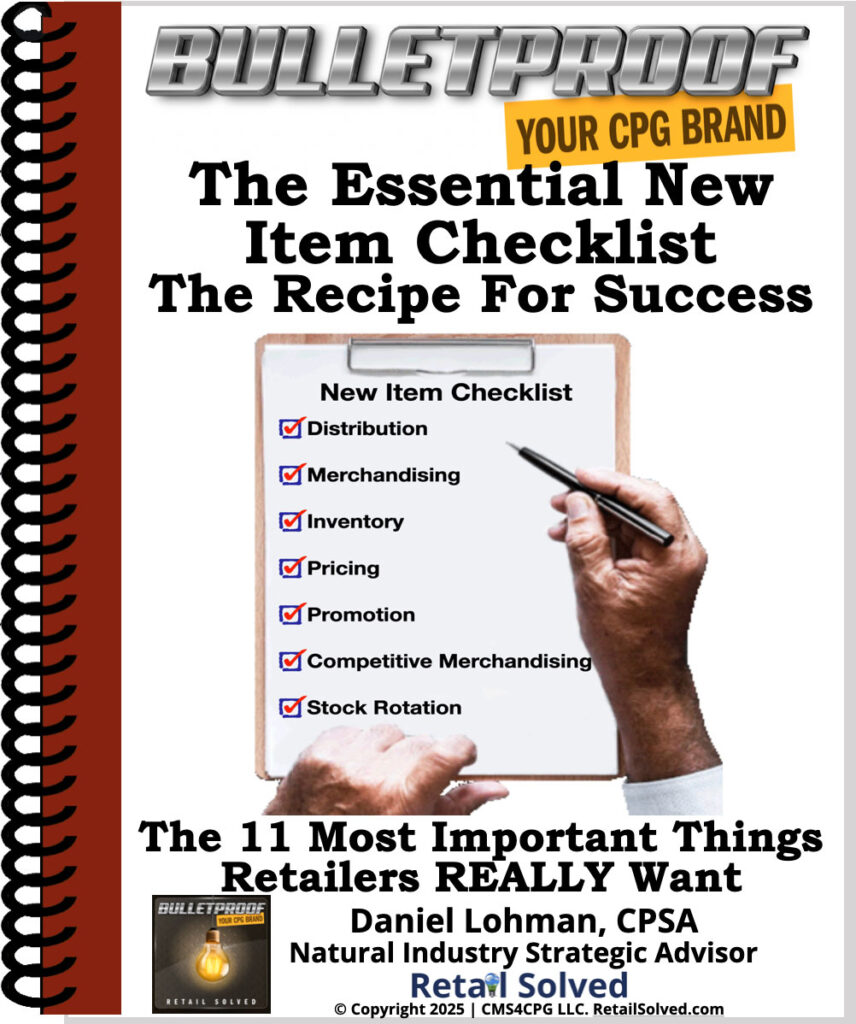
The Essential New Item Checklist – The Recipe For Success
Want A Competitive Edge? The Recipe For Success
New product innovation is the lifeblood of every brand. New products fuel sustainable growth, attract new shoppers and increase brand awareness. Learn the critical steps to get your product on more retailer’s shelves and into the hands of more shoppers. Maximizing your trade marketing can pour rocket fuel on your launch.
Image is the property of CMS4CPG LLC, distribution or reproduction is expressively prohibited.
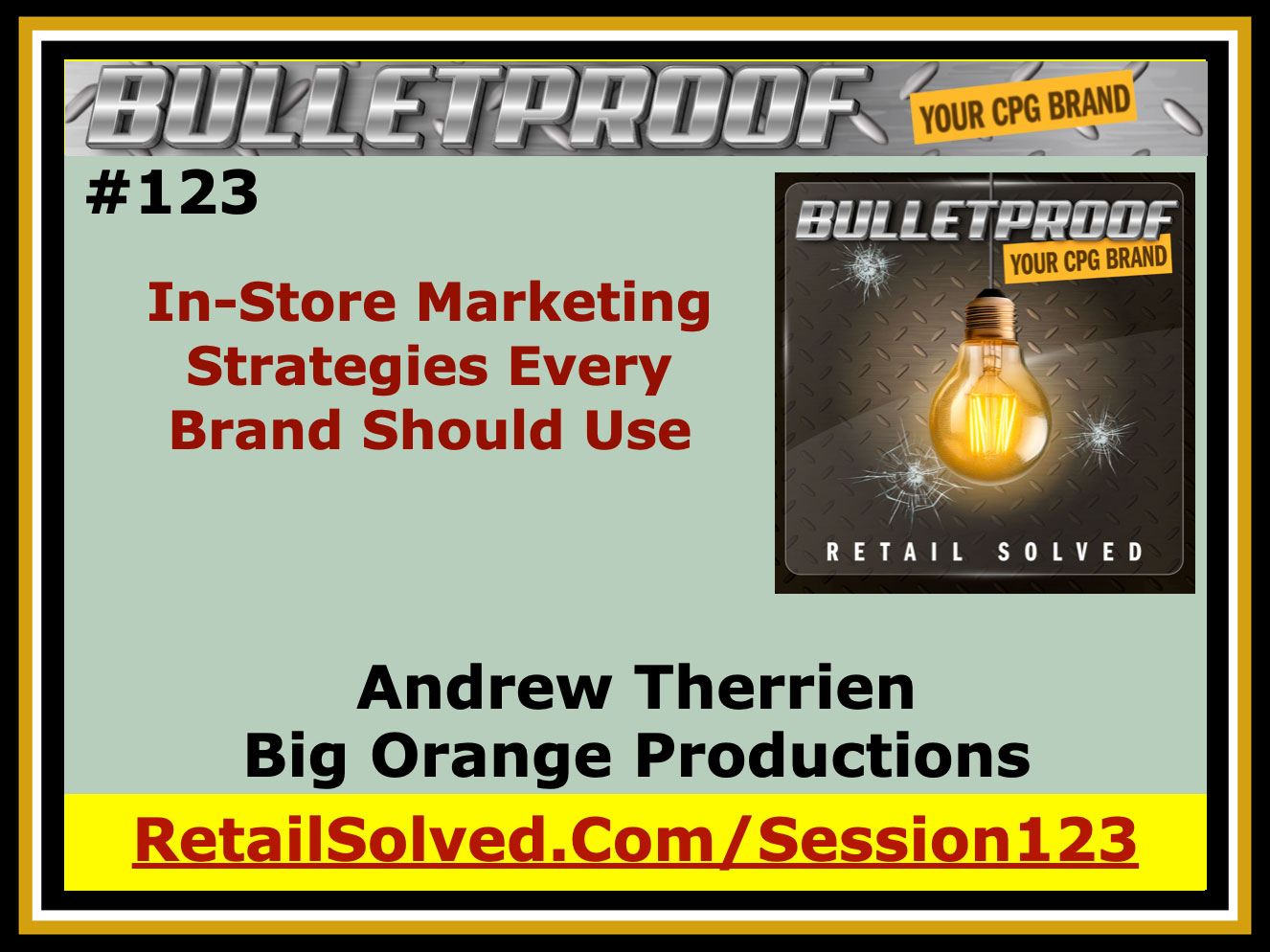








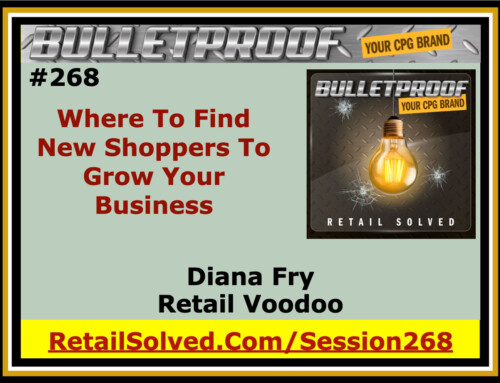
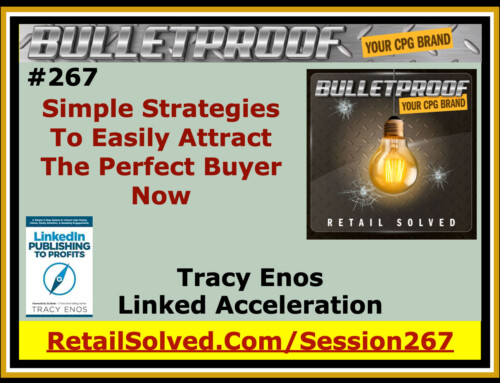
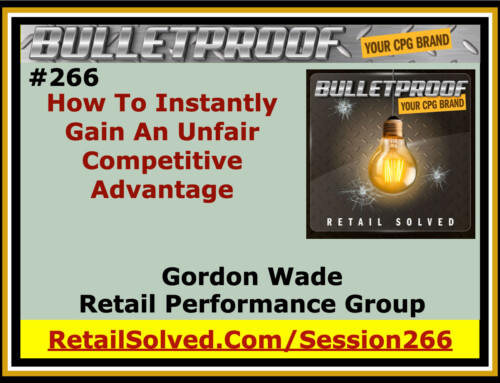
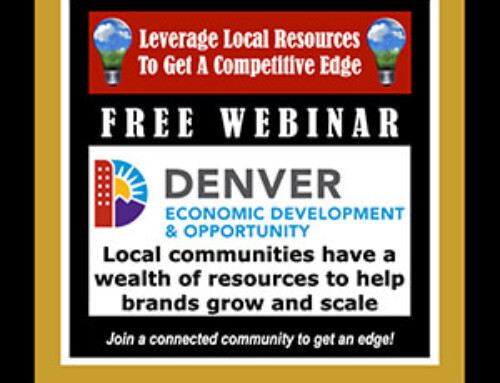
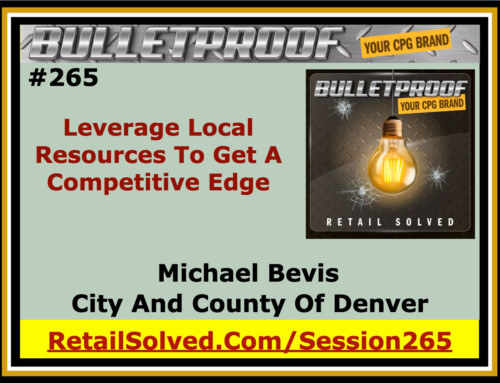
Interesting blog on store marketing strategies, I really appreciate the blog. Please keep sharing.